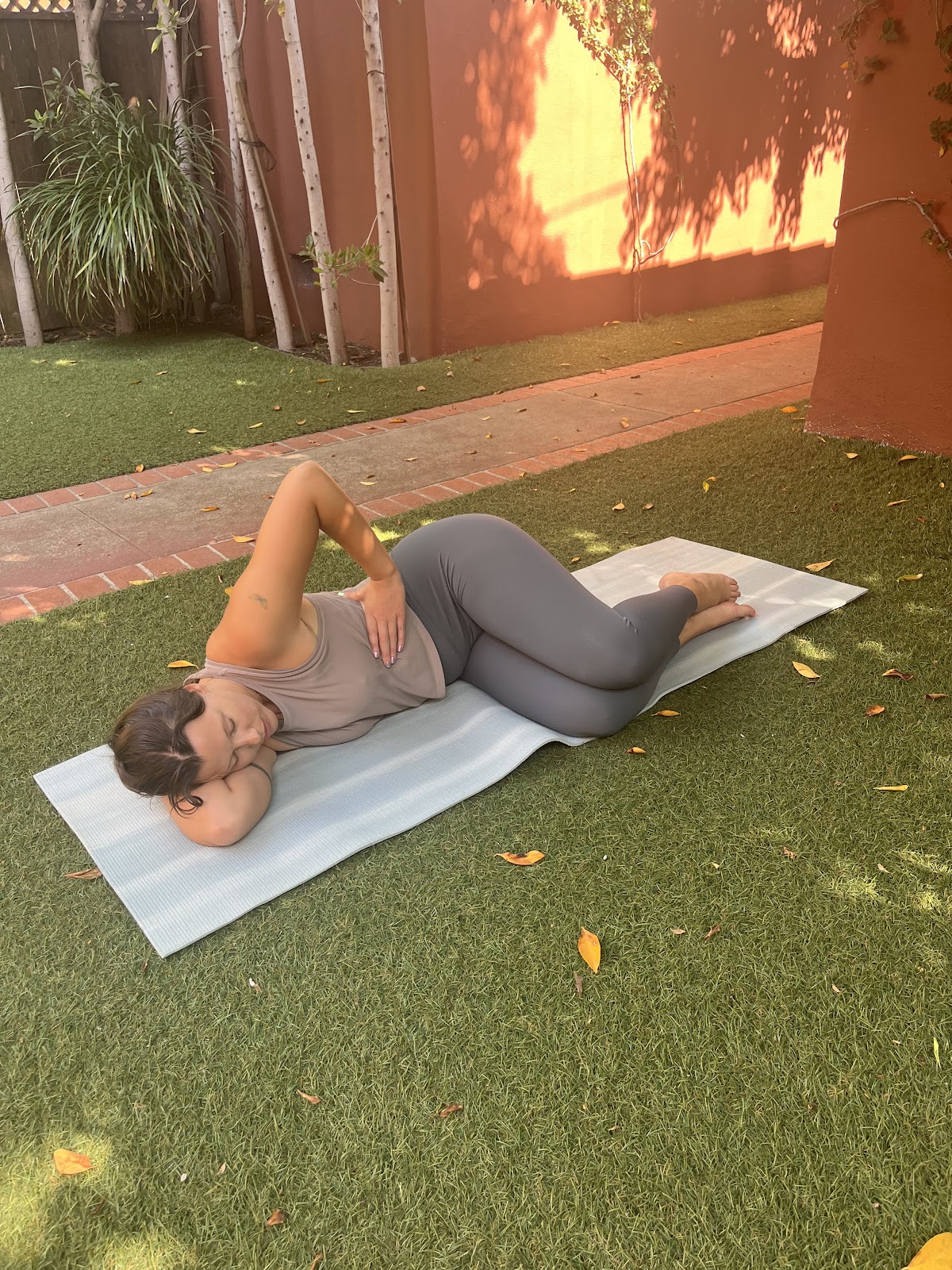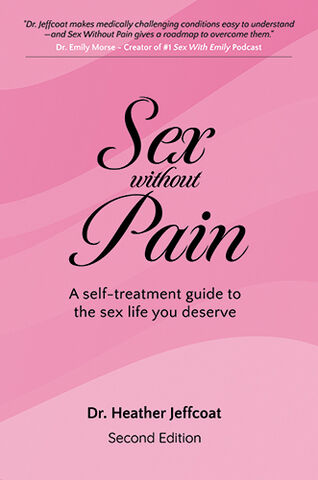
The Femina Physical Therapy Blog
Featuring original articles by our staff about current events and trends
Explore our insightful blog articles on pelvic health, where we delve into essential topics that empower and educate. From understanding pelvic floor disorders to strategies for conquering infertility, our content is designed for those seeking knowledge and support. We discuss the latest research, expert advice, and practical tips to enhance your well-being and foster a deeper connection to your body.
Featured From the Blog:
Treating Bloating and Abdominal Distension: a Multi-Disciplinary Team

Why a Multi-Disciplinary Team is Best for Treating Bloating and Abdominal Distension
Bloating, abdominal distension, loose stools, constipation, abdominal or pelvic pain, fatigue, brain fog, weakness, nutritional deficiencies… these symptoms may be caused by a variety of gastrointestinal or pelvic conditions. If you are experiencing any of these symptoms, this article is a good place to start when deciding who to have on your care team, and what treatments can help!
Restorative 20 Minute Home Yoga Practice For Chronic Pelvic Pain

Yoga Practice For Chronic Pelvic Pain Can Be a Very Helpful Routine
As stated in my last blog post, yoga can be so beneficial as a pain management tool due to its ability to modulate the sympathetic nervous system3,4 which plays a large role in chronic pain. The exact mechanism of how yoga helps with chronic pain is still being studied, however, it is reasonable to believe the full body relaxation promoted by a yoga practice helps to decrease tension in key muscle groups- including the hips and pelvic floor which are often tight in people with chronic pelvic pain.
Currently, evidence has mostly focused on one hour long practices as an intervention, although there are some studies that report improvements in pain with shorter practices, such as the routine below. As with any mobility/stretching routine, benefits will be seen with more frequent practice, however even twice weekly can help decrease pain.
Read more: Restorative 20 Minute Home Yoga Practice For Chronic...
Vulvovaginal Moisturizers: Who Needs One & Choosing the Right One

Choosing the Right Vulvovaginal Moisturizer
Assuming you need one, make sure it's got the right ingredient list
There are many reasons why those born with female anatomy may require the use of a vulvovaginal moisturizer throughout their lifetime. As you age, the vaginal and vulvar tissues tend to become drier and less elastic. This change is typically seen around the time one goes through menopause due to the drop in estrogen that occurs. The vulvovaginal tissues are very sensitive to hormonal changes and estrogen is the hormone that controls vaginal lubrication, as well as tissue elasticity and thickness.
Read more: Vulvovaginal Moisturizers: Who Needs One & Choosing the...
- Details
- Written by: Staff
- 6979 Views

Did You Know Physical Therapy Can Help Endometriosis?
What is the link between endometriosis and painful sex?
Endometriosis is a global disease affecting 5-15% of women during their reproductive years. It is characterized by the presence of endometrial-like tissue outside of the uterus which can trigger a local inflammatory response and can have a significant impact on patients’ quality of life.
Sexual Function
One such domain of quality of life that is often affected is sexual function. The DSM-V1 defines sexual dysfunction as a clinically siginifcant disturbance in a person’s ability to respond sexually or to experience pleasure and includes: pelvic pain, penetration disorders, lack of sexual interest and/or arousal and orgasm disorders. Unfortunately, it is common, as approximately 40% of women with endometriosis and chronic pelvic pain suffer from sexual dysfunction.
Read more: Physical Therapy Can Help Endometriosis and Painful Sex
- Details
- Written by: Staff
- 8179 Views

What's the Link Between Endometriosis and Central Sensitization?
Endometriosis affects roughly about 10% of reproductive-age women, and is characterized by endometrial-like lesions that grow outside of the endometrium (the lining of the uterine wall). Women with endometriosis have symptoms such as: chronic pelvic pain, dysmenorrhea, abdominal pain, infertility, constipation, interstitial cystitis/painful bladder syndrome, and more.
Often endometriosis is treated through hormonal management and/or surgically. However, 18-27% of patients with endometriosis treated via hormonal medications reported no relief from symptoms. About 20% of patients with endometriosis treated through surgical excision or ablation continued to experience chronic pelvic pain and other endometriosis symptoms. Moreover, 70 to 80% of women with chronic pelvic pain with confirmed endometriosis lesions do not have lesions in the areas where they experience symptoms.
Read more: Endometriosis and Central Sensitization: Pain in...
- Details
- Written by: Staff
- 6294 Views

What causes incontinence during pregnancy?
There are many causes for incontinence during pregnancy and postpartum. Some of the proposed factors are:
- hormonal changes,
- pelvic floor muscle and connective tissue modifications,
- bladder neck widening (due to the weight of both the uterus and the growing fetus),
- anatomical injuries during delivery.1, 2
A hormone called relaxin is produced during pregnancy to help soften the muscles and ligaments in preparation for delivery. As the uterus and baby grow throughout pregnancy more load is placed on the pelvic floor muscles causing the pelvic floor muscles to become weaker.3 Also constipation, which is commonly seen in pregnancy, puts an additional load on the pelvic floor.4 Furthermore, the pelvic floor has additional strain placed on it during labor; the pelvic floor muscle is stretched five times its original length.5
Read more: Incontinence During Pregnancy & Postpartum | Postpartum...
- Details
- Written by: Staff
- 8225 Views

What Are The Connections Between Endometriosis and Sleep?
March is Endometriosis Awareness Month.
The endometrium is the lining of the uterus. When there is tissue similar to the endometrial lining that is growing outside of the uterus, it is called endometriosis. Endometrial lesions can be on the ovaries, vaginal walls, bladder, colon, and more. Endometriosis affects up to 10% of the general population and can be quite debilitating as common symptoms include dysmenorrhea, dyspareunia (pain with sex), infertility, bloating, gastrointestinal symptoms, and chronic pelvic pain.
Read more: Endometriosis and Sleep Blog: Improving Melatonin Levels
- Details
- Written by: Staff
- 6933 Views

Pelvic Floor Rehabilitation for Prolapse Surgeries
Including both Pre and Post Operative Situations
Suffering from symptoms of pelvic heaviness? Experiencing a feeling that there is a bulge down there or something is falling out of your vagina? Have trouble having a bowel movement or experiencing incontinence? These are all common symptoms of pelvic organ prolapse (POP). Unfortunately, 2-48% of women may experience symptoms of POP.
Pelvic Floor Rehabilitation Treatment Options
There are treatment options such as pelvic floor rehabilitation through physical therapy techniques including lifestyle modifications such as managing intraabdominal pressure, promoting healthy bowel/bladder habits, as well as physical therapy, manual therapy, and strengthening exercises to decrease pelvic heaviness.
Read more: Pelvic Floor Rehabilitation for Pre/Post Operative...
- Details
- Written by: Staff
- 23374 Views

What's the Connection Bewteen Eating Disorders and Pelvic Floor Dysfunction?
Read on for some answers.
Eating disorders are unfortunately common, with at least 9% of people worldwide suffering from an eating disorder. This translates to 28.8 million Americans will have an eating disorder in their lifetime. There are different types of eating disorders (ED) including anorexia nervosa, bulimia nervosa, and binge eating disorder. Other than the typical psychological and social implications that these eating disorders may cause, they also can affect our pelvic health and lead to pelvic floor dysfunction. It can lead to incontinence (either urine or feces), prolapse, increased urinary urge, pelvic pain (possibly associated with polycystic ovarian syndrome or PCOS), constipation, and sexual dysfunction.
Read more: Eating Disorders and Pelvic Floor Dysfunction | ED...
- Details
- Written by: Staff
- 8499 Views

Contraceptives and Sexual Function Considered
As pelvic floor physical therapists, we work with a lot of women who have some type of female sexual dysfunction, whether it may be pain with initial penetration, pain with deep thrusting/deep penetration, pain with orgasms, or decreased sexual arousal, desire, libido. Unfortunately, about 30-50% of women may suffer from these symptoms.
We often see women with sexual impairments have the following conditions/scenarios:
- Postpartum (regardless of delivery)
- Vaginismus (involuntary spasms of the pelvic floor muscles)
- Post-menopausal
- Vulvodynia
- Skin inflammatory conditions such as lichen sclerosus
Read more: What Do We Know About Contraceptives and Sexual Function?
- Details
- Written by: Kasia Gondek, PT, DPT, CLT, CSCS
- 6431 Views

SMART Pelvic Health Goals
As we enter 2022, the new year marks a time of both reflection on the previous year and forward-thinking and planning for the year ahead. That’s why the beginning of the year is a great time to reset your pelvic health goals! Here at Femina Physical Therapy, we like to use the S.M.A.R.T. goal setting with frequent review of progress toward these goals. S.M.A.R.T. goals offer a simple and proven method of creating and evaluating goals that are reachable, specific and achievable. The S.M.A.R.T. acronym stands for:
- Specific (simple, sensible, significant).
- Measurable (to help motivate and track your progress).
- Achievable (attainable).
- Relevant (reasonable, results-based, unique to you).
- Time-bound (time-based, time-limited).
When creating your list of pelvic health goals, keep in mind what is relevant and meaningful to you. Visualize what achieving your goals might look like, how will it feel, what will your reward to yourself be? It is important to keep these critical aspects in mind when creating goals in order to determine if they are reasonable, achievable, and meaningful! Plus, a reward for achieving our goals keeps us motivated to push through challenges and roadblocks along the way.












